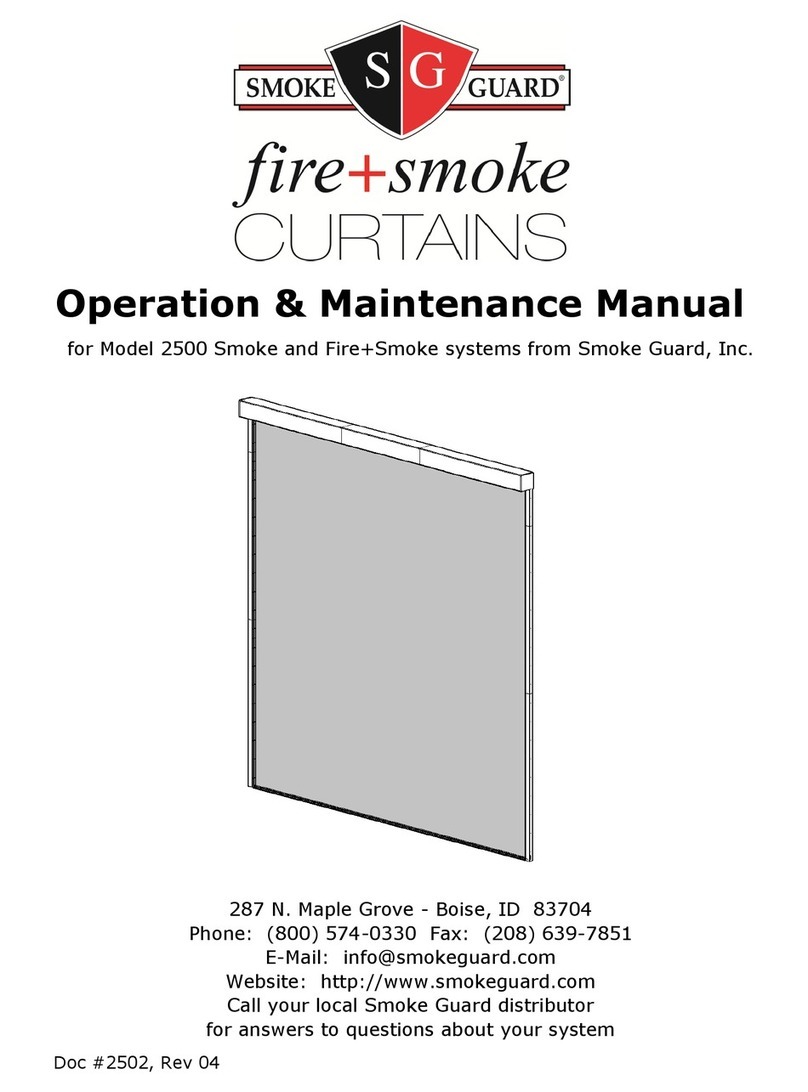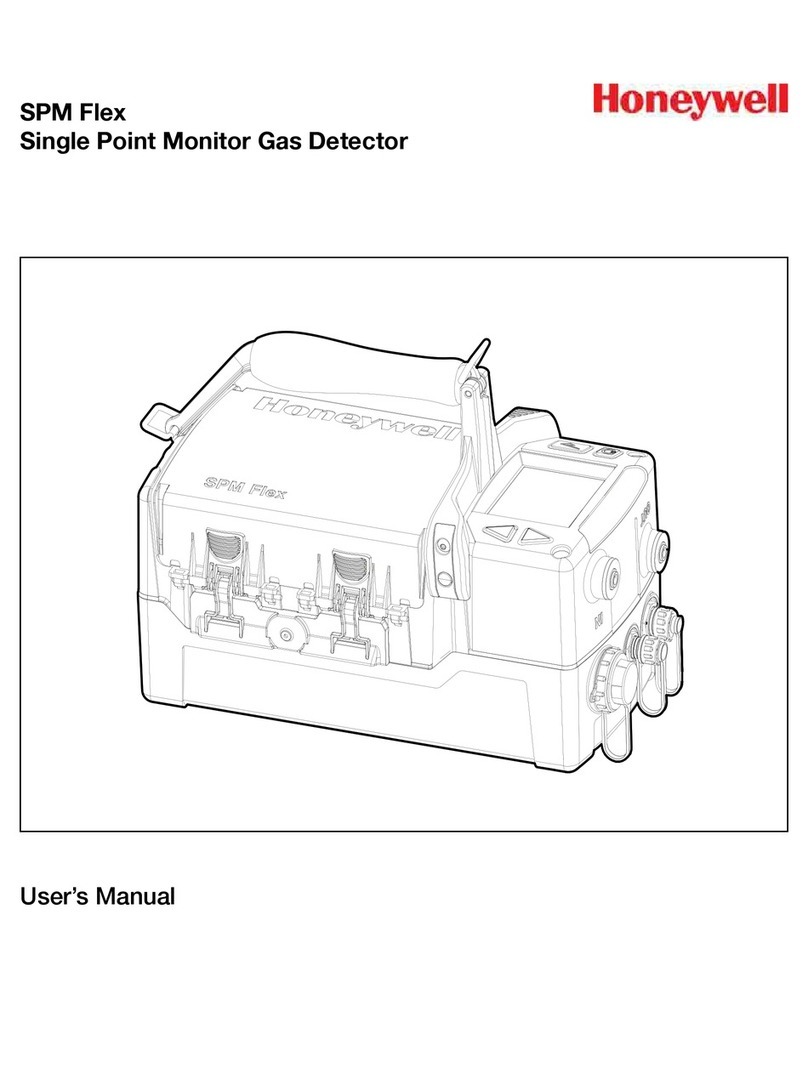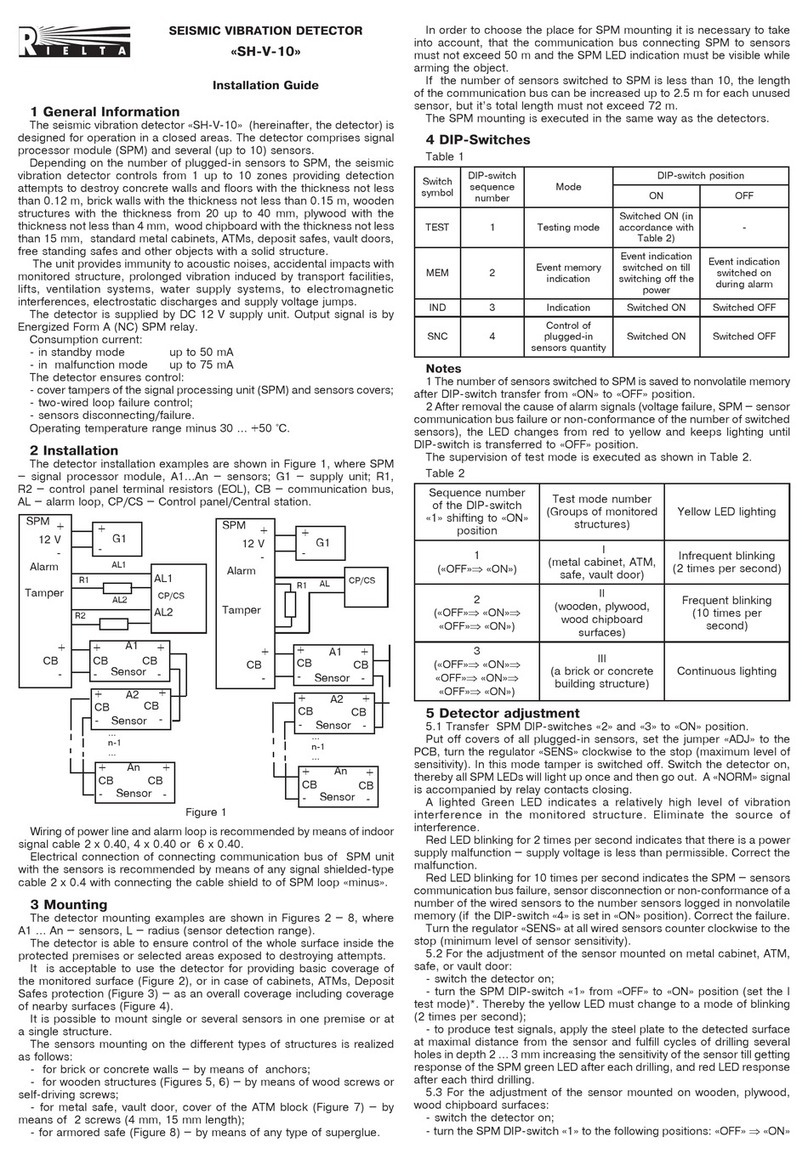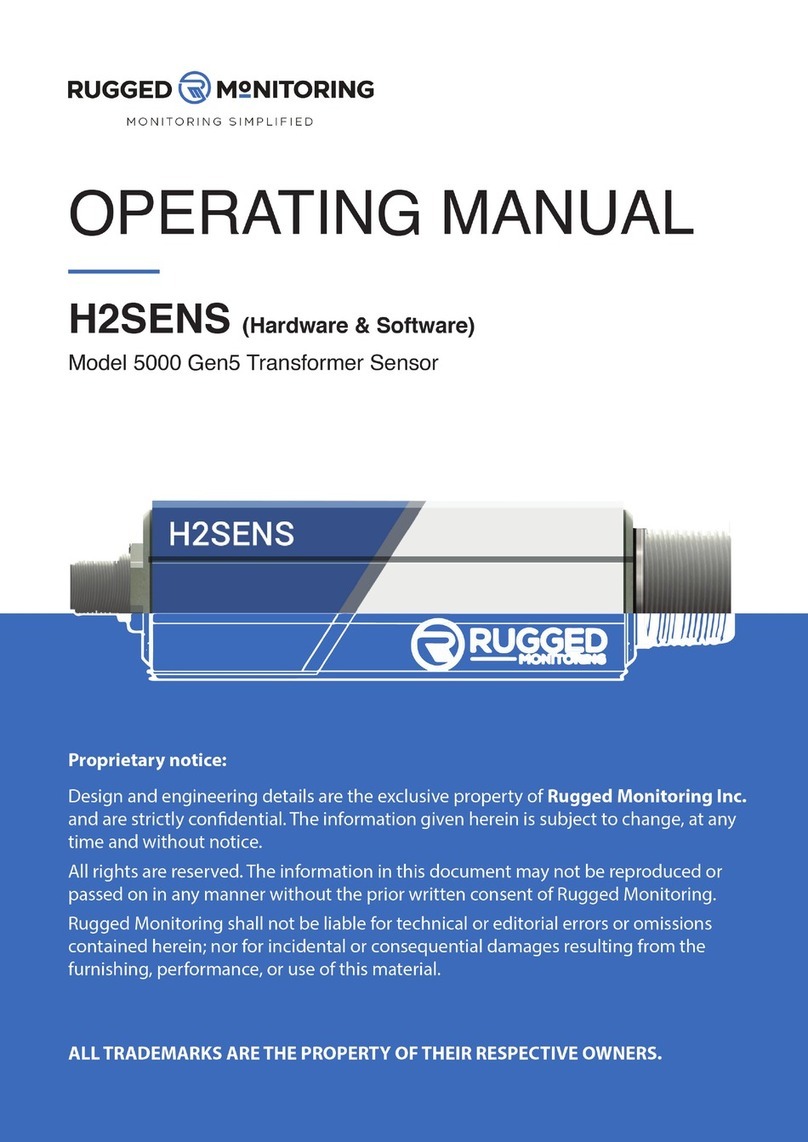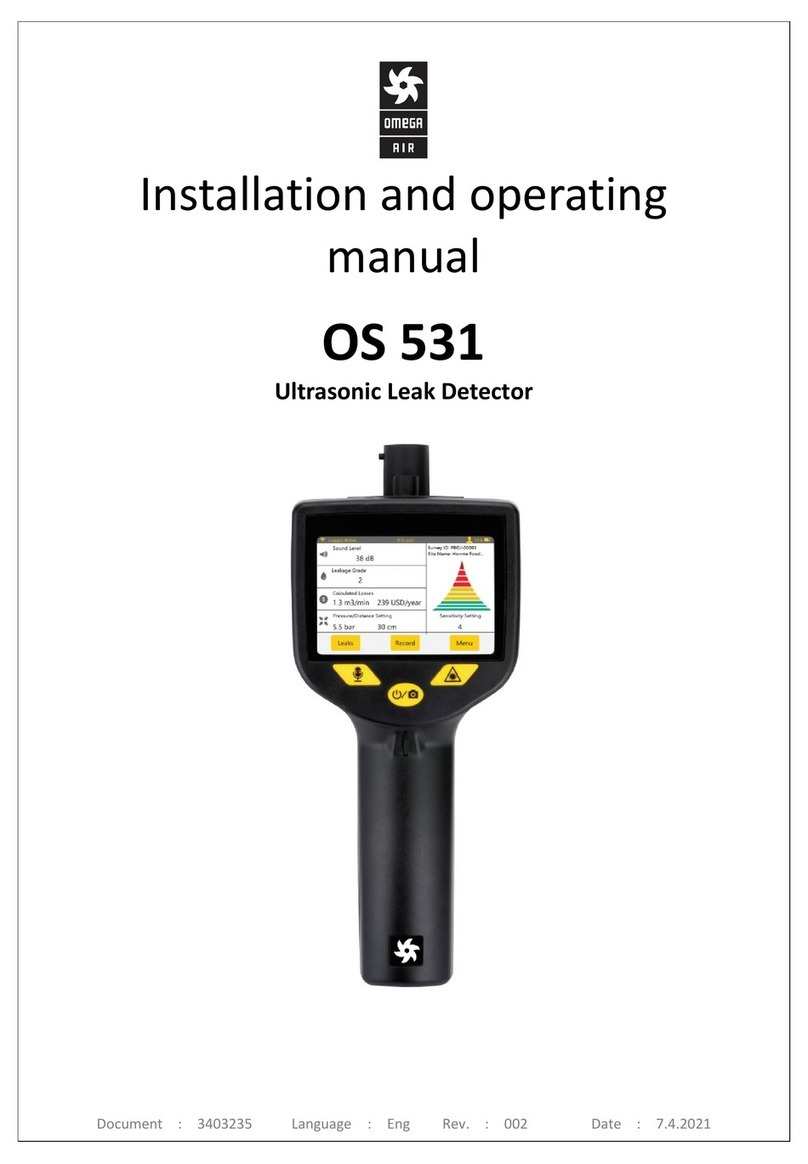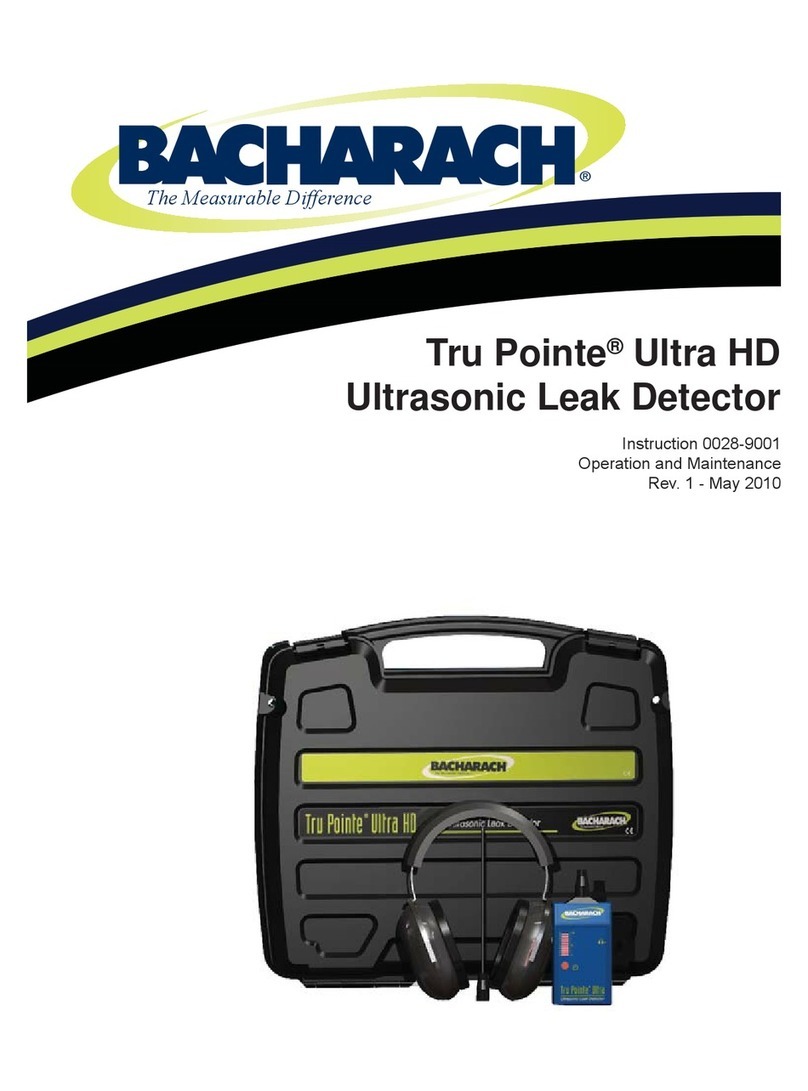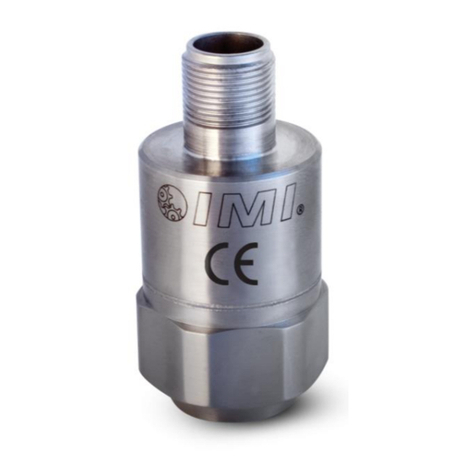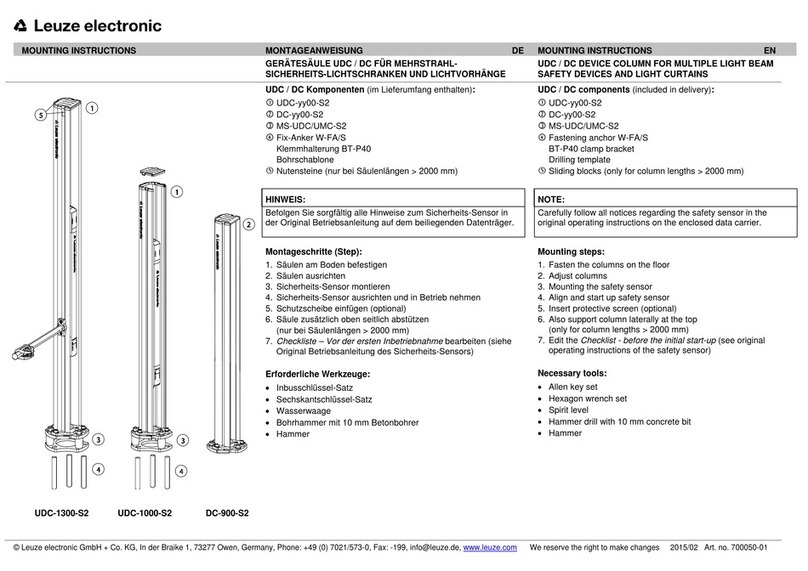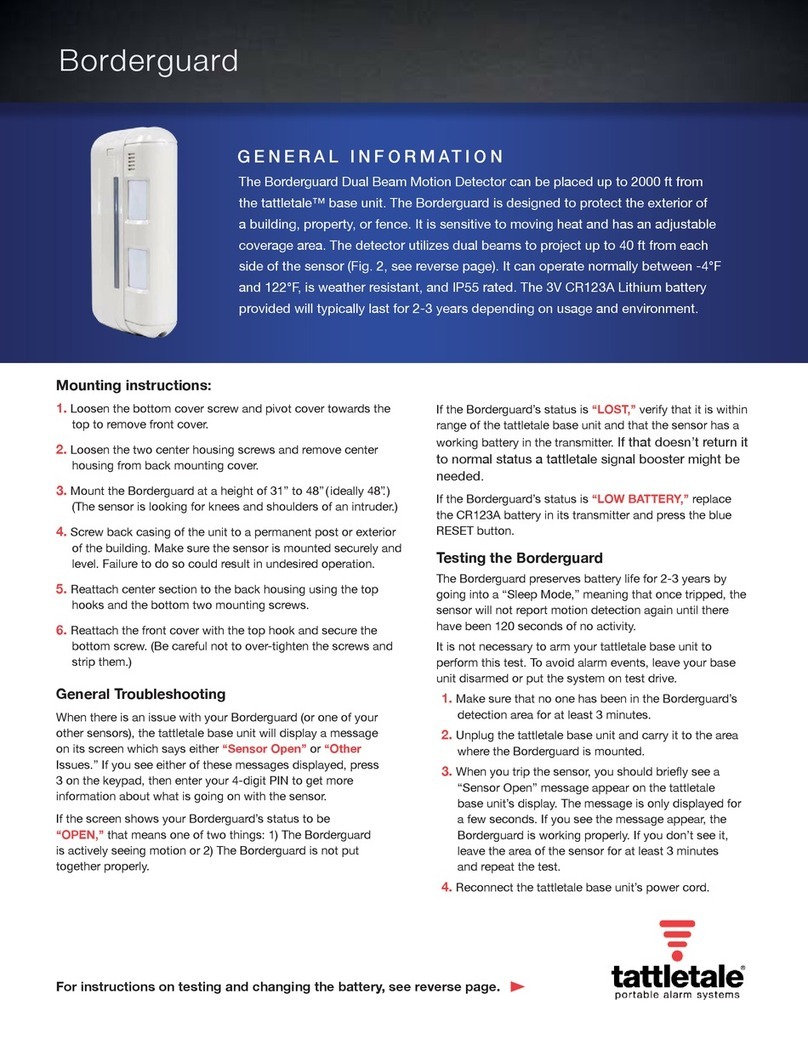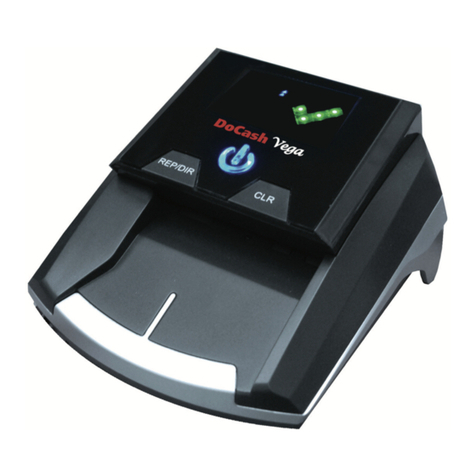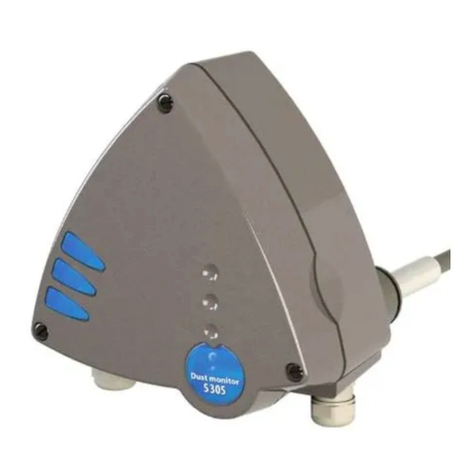Smoke Guard 200 Manual

Models 200 & 400 Operation & Maintenance Manual
including semi-annual testing procedures
for your Smoke Guard® System
287 N. Maple Grove - Boise, ID 83704
Phone: (800) 574-0330 (208) 639-7851
Website: http://www.smokeguard.com
Call your local Smoke GuardSystem Distributor
for answers to questions about your system

Important
The purpose of your Smoke Guard System is to reduce the risk of death or serious injury
due to vertical smoke migration in the elevator shaft during a fire.
The Smoke Guard System is designed to meet the requirements of the International
Building Code. Our manufacturing quality control programs and network of factory-
trained installers help ensure that your system functions as designed at the time of
installation.
As with other components of your fire protection system, periodic maintenance is
required. The building owner must inspect and test each Smoke Guard system unit at
least once every six months. Damage to the housing, improper painting of the elevator
door frame, or other factors could hinder the proper operation of your unit. Failure to
properly test and maintain your Smoke Guard System could result in death or serious
injury in the event of a fire.

Table of Contents
Introduction...................................................................................................................................4
Why the Smoke Guard System?...............................................................................................4
The responsibilities of the building owner .................................................................................5
Operation......................................................................................................................................6
How the Smoke Guard system works .......................................................................................6
What makes up the Smoke Guard system................................................................................6
What to do if the curtain has deployed......................................................................................7
How to disconnect power to the unit .........................................................................................7
What to do if someone walks through a deployed curtain.........................................................7
Semi-Annual Testing.....................................................................................................................8
Record of testing: Smoke Guard system......................................................................................9
Troubleshooting..........................................................................................................................11

Introduction
This is the official operation, maintenance, and testing manual for Model 200 and Model
400 smoke containment systems from Smoke Guard Inc.. This section includes the
following topics:
Why the Smoke Guard System?
Responsibilities of the building owner
NOTE: Read this entire manual before operating, maintaining or testing your Smoke Guard
System.
Why the Smoke Guard System?
Why are elevators a problem?
A natural ventilation cycle called “stack effect” occurs in every building over one story in
height. Air typically infiltrates the lower portions of the building and is exhausted out of
the top. The taller the building and the greater the temperature difference between the
inside and outside temperatures, the greater the air flow. The elevator shaft acts like the
chimney in a fireplace, drawing smoke from a building fire through the gap between the
elevator door and frame, and exhausting the smoke into the upper floors.
How does the Smoke Guard system fit into the codes?
The Smoke Guard system is a rolling gasketing smoke containment system used in
conjunction with a fire-resistance-rated elevator door and frame assembly to provide a
smoke and draft control assembly. The system is installed over elevator openings and is
intended to be used as an alternative to the requirement for a separated elevator lobby
in the applicable code.

The responsibilities of the building owner
The Smoke Guard system is considered “connected equipment” as defined in NFPA 72.
As such, the owner or a designated representative shall be responsible for inspecting,
functional testing, recording of tests, and maintaining the system. Delegation of
responsibility shall be in writing, with a copy made available to the authority having
jurisdiction under the provisions of the building code and local ordinances.
Testing frequency
Visual inspection, functional testing, and maintenance described in this manual must be
performed and recorded at intervals not longer than 6 months, more frequently where
required by the authority having jurisdiction.
Alterations and additions
Visual inspection shall ensure that there are no changes that would affect equipment
performance, such as building modifications, occupancy hazards, and environmental
effects. Smoke Guard recognized personnel must perform any alterations or additions
to your system.
System acceptance testing
Acceptance tests shall be performed after system components are added or deleted,
after any modification, repair, or adjustment to the system hardware or wiring.
Painting
Do not field paint auxiliary rails, housing, or housing door without first contacting Smoke
Guard or your installing distributor.
Do not paint housing door shut.
Painting auxiliary rails requires that you strip them of existing paint to base metal
and repaint with a spray paint, which is resistant to 300 degrees Fahrenheit, to a
maximum thickness of 0.005 inch.
After painting any of the above said components, your system must be tested
completely.

Operation
How the Smoke Guard system works
Ready
The system connects to an auxiliary relay in the smoke detector for the elevator landing.
The smoke containment curtain is rolled into a housing located above the elevator door.
Alarm
There are two alarm conditions that deploy the smoke containment curtain:
smoke detector goes into alarm (but NOT in response to a general fire alarm)
continued loss of power
Under alarm conditions, the curtain automatically unrolls and magnetically attaches to
auxiliary rails or ferrous elevator door frame. The curtain stops when it reaches the floor.
An aluminum tube creates a seal at the floor when the curtain is fully deployed.
Deployed
When the unit is deployed, it remains deployed until you reset the smoke detector or re-
establish power to the unit (see “Rewind” below). The curtain may bow slightly in or out
due to the direction of the airflow. While the curtain is deployed, anyone who needs to
move through the opening can press a rewind switch to retract the curtain temporarily.
The curtain then unwinds to the fully deployed position if alarm conditions still exist;
otherwise, it rewinds fully and remains in ready mode.
NOTE: The system is designed so there is a delay of several seconds after the unit has
deployed before the rewind switch will operate.
Rewind
The curtain rewinds automatically when you reset the smoke detector or reestablish
power to the unit. (Pressing the rewind switch rewinds the curtain only temporarily as
long as an alarm condition exists.)
What makes up the Smoke Guard system
Housing
The housing is a sheet metal box, with a dust cover, mounted above the elevator door.
The housing holds the curtain , the control circuit board (see below), up-limit switch,
clutch, viscous governor, and rewind motor. In addition, the housing contains the
electrical connections to 120VAC, the smoke detector, and the rewind switch.
Auxiliary rails (required for most installations)
Auxiliary rails attach to the wall next to the elevator door frame. These rails attract the
magnets on the curtain and form a seal. In some installations, the elevator frame is of a
ferrous metal and the auxiliary rails are not necessary.
Curtain
The curtain material is reinforced transparent polyimide plastic film. The film is attached
to a flexible magnet along each vertical edge by means of an elastomeric sealant that
allows the film to expand under differential air pressures likely found in an elevator shaft.

Control circuit board
The control circuit board monitors current from the 120VAC and smoke detector. When it
senses a continued loss of power, or a change in the current from the smoke detector, it
deploys the curtain.
NOTE:
The smoke detector is part of the building smoke and fire alarm system and NOT a
component of the Smoke Guard system. The smoke detecting system must be
inspected, tested, and properly maintained in accordance with the equipment
manufacturer’s guidelines.
What to do if the curtain has deployed
The curtain should only deploy if the smoke detector goes into alarm or power to the unit
is interrupted for several seconds. After the unit deploys, activating the rewind switch
rewinds the curtain temporarily. If the smoke detector is still in alarm, the unit then
redeploys. When the local smoke detector is no longer in alarm, the curtain rewinds
automatically. The door automatically closes behind a Model 400. If the unit is a Model
200, close the door manually.
If a unit deploys during a fire, notify Smoke Guard (800-574-0330) for a free service visit.
How to disconnect power to the unit
If you need to disconnect 120 VAC to the unit, hook the housing door key (provided with
the unit) around the lip of the housing door to pull it open (door opens AWAY from the
elevator) to reach the service disconnect switch.
What to do if someone walks through a deployed curtain
If someone walks through a deployed curtain, DO NOT rewind the curtain into the
housing until you realign the flexible magnetic strips to a vertically plumb orientation.
1. Turn OFF power to the unit using the switch inside the housing on the control
box.
Holding the outside edges of the magnets near the top of the curtain, lift the
magnets off the rails. Gently pull both magnets apart to smooth out the film out
and then allow the magnets to reattach to the rails.
2. Continue in this manner working down the length of the curtain to the floor. Both
magnets should be plumb and cover the rails evenly.
3. Press the rewind switch. The curtain rewinds temporarily and then redeploys.
4. If there is any telescoping of the magnet rolls, repeat steps 1 through 4.
5. Turn ON power to the unit.
housing door
key provided
with the unit
service disconnect switch

Semi-Annual Testing
The Smoke Guard system is considered “connected equipment” as defined in NFPA 72.
As such, the owner or a designated representative shall be responsible for inspecting,
functional testing, recording of tests, and maintaining the system at intervals not longer
than 6 months, or as required by the authority having jurisdiction.
step procedure
1 Activate the elevator landing smoke detector connected to the unit per the
smoke detector manufacturer recommendations.
2 Observe the deployment of the curtain.
The curtain unwinds smoothly from the housing and stops
when it meets the floor. (Some slack in both cables is normal.)
3 Visually inspect the curtain assembly.
There is no damage to the curtain, flexible magnets, rewind
switch, or the seal at the floor.
4 Inspect the flexible magnets.
Both magnets are plumb and cover the auxiliary rails evenly (or
the elevator frame in the absence of rails).
5
Press the rewind switch on the face of the curtain.
NOTE: The system is designed so there is a delay of several seconds
after the unit has deployed before the rewind switch will operate.
The curtain rewinds briefly, and then it redeploys (if the smoke
detector remains in alarm).
6
Engage the rewind motor by resetting the smoke detector.
The curtain rewinds with a uniform roll around the threshold
pulleys with no telescoping of 1/2 inch or more.
If the unit is a Model 400, the door closes behind the curtain as
it rolls into the housing.
If it is a Model 200, the door catches securely when you close it
manually.

Record of testing: Smoke Guard system
Installation Date: ___________________________________
Test
date Unit
location Results Inspector’s name Inspector’s signature

Test
date Unit
location Results Inspector’s name Inspector’s signature

Troubleshooting
Quick tips
PROBLEM
CAUSE
SOLUTION
System does not respond to
the rewind switch on the
curtain.
Attempt to utilize the switch
too soon after deployment
The system is designed with
a delay to allow the switch to
adjust to the deployed state.
Wait several seconds after
deployment before pressing
the switch.
Green LED on control cover
is not on No smoke detector diode
installed
OR
Diode installed incorrectly
Fire alarm technician must
install diode provided by
Smoke Guard.
Red LED on control cover is
not on. No 120 VAC to unit junction
box Electrician must provide 120
VAC to housing junction box
constant clicking when power
supplied bad ground, clutch engaging
and disengaging repeatedly supply a good ground.
door won’t close ceiling/soffit pinches housing
distorting door Release pressure on the
housing so there is at least a
1/8” gap between the housing
and ceiling/soffit.
Call your local Smoke GuardDistributor
for answers to questions about your system
or call
Smoke Guard Technical Services
1-800-215-6138
Other manuals for 200
2
This manual suits for next models
1
Table of contents
Other Smoke Guard Security Sensor manuals
Popular Security Sensor manuals by other brands
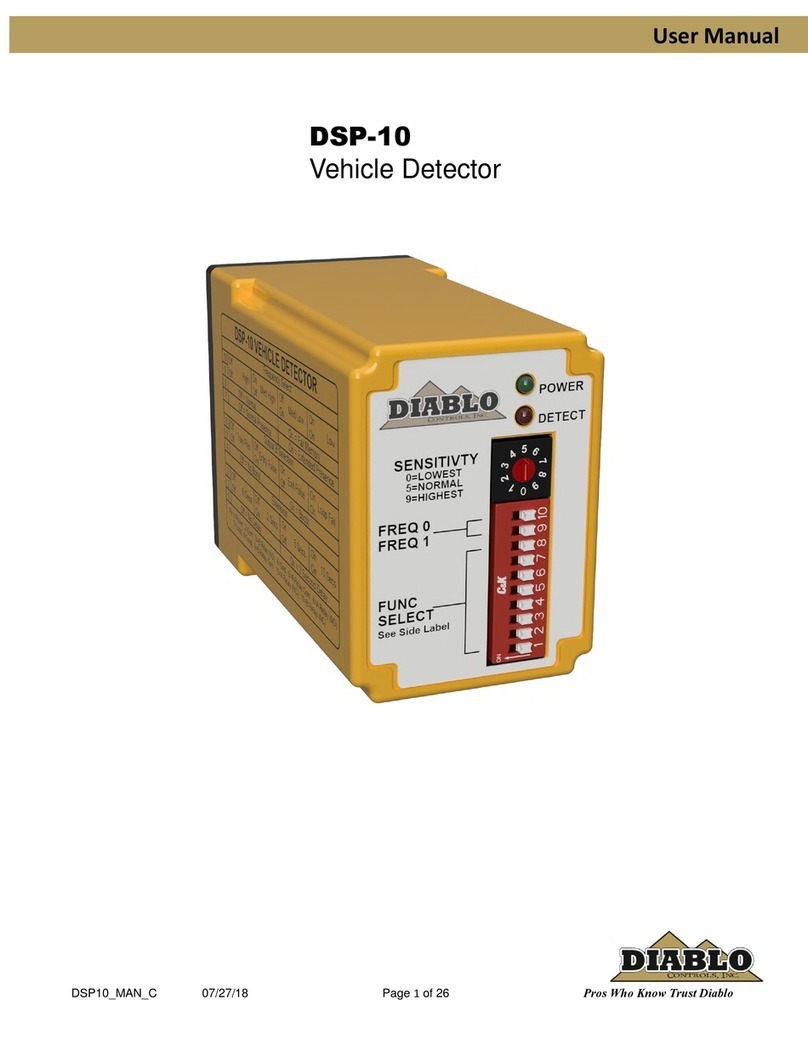
Diablo
Diablo DSP-10 user manual
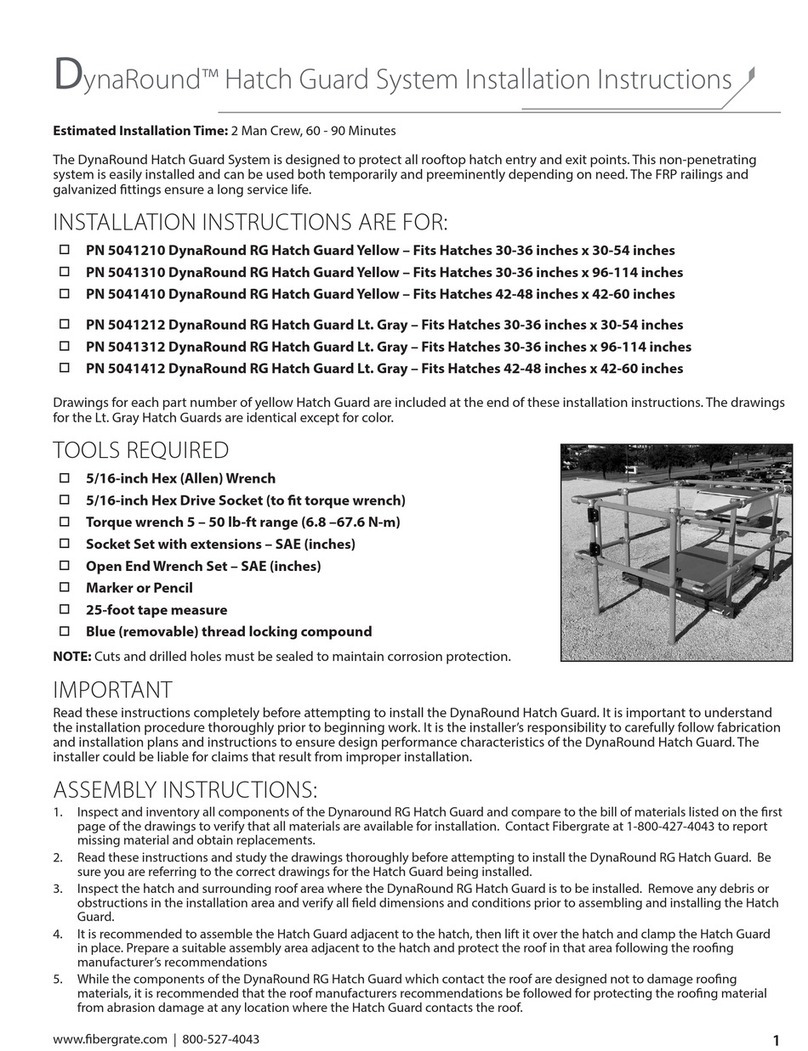
Fibergate
Fibergate 5041210 DynaRound RG Hatch Guard Yellow installation instructions
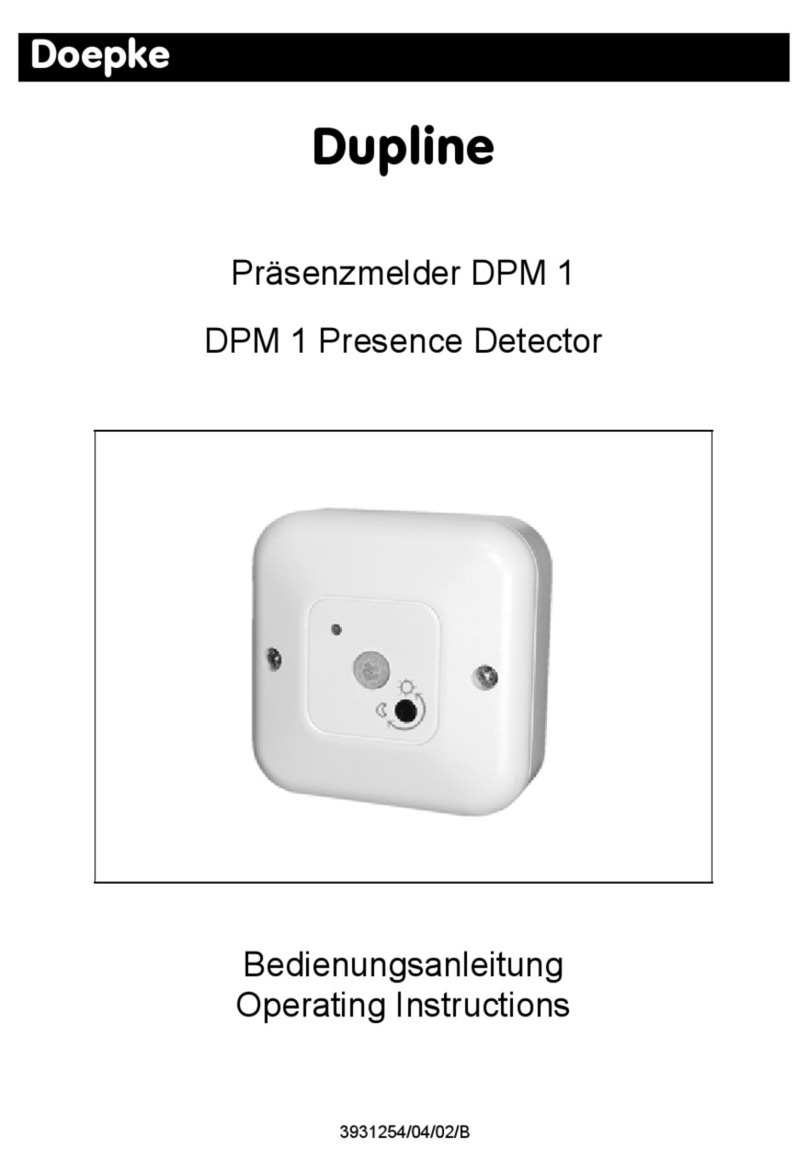
Doepke
Doepke Dupline DPM 1 operating instructions
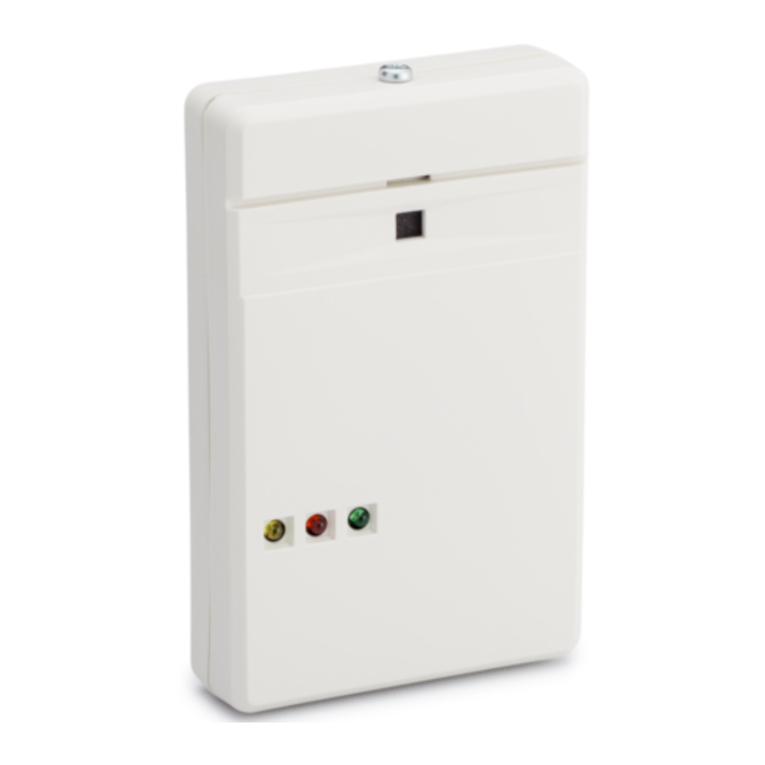
Honeywell
Honeywell FG-730 user manual
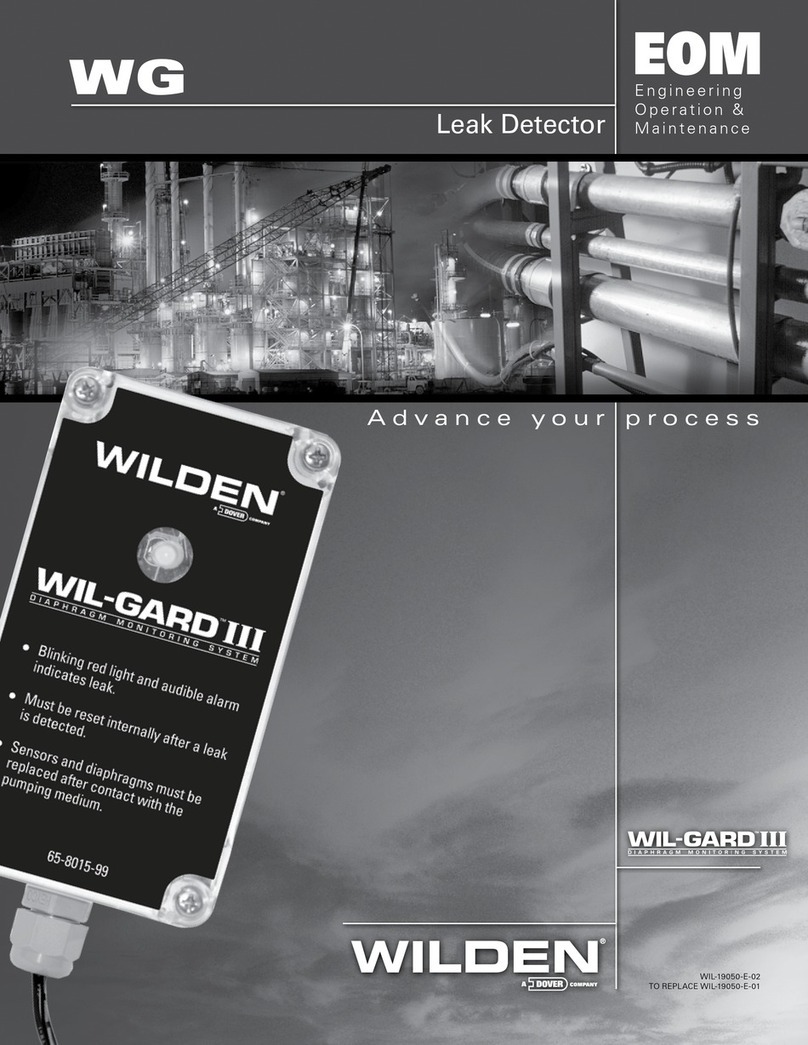
Dover
Dover Wilden WG Series Engineering, operation & maintenance
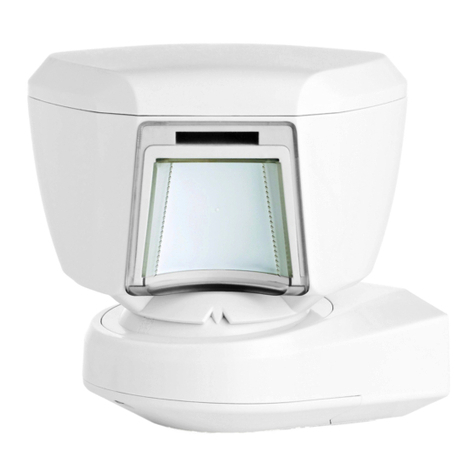
Visonic
Visonic TOWER 20 AM - INSTALLER GUIDE installation instructions
